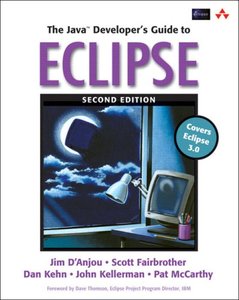Enterprise Java Development on a Budget: Leveraging Java Open Source Technologie (Paperback)
暫譯: 預算內的企業 Java 開發:利用 Java 開源技術 (平裝本)
Brian Sam-Bodden, Christopher M. Judd
買這商品的人也買了...
-
 Computer Organization & Design: The Hardware/Software Interface, 2/e
Computer Organization & Design: The Hardware/Software Interface, 2/e$1,200$1,176 -
 哇 PhotoImpact 6 魔法秘笈
哇 PhotoImpact 6 魔法秘笈$99$84 -
 C++ Primer, 3/e 中文版
C++ Primer, 3/e 中文版$980$774 -
 Excel 2002 實力養成暨評量
Excel 2002 實力養成暨評量$350$277 -
 專業 PHP4 程式設計 (Professional PHP4)
專業 PHP4 程式設計 (Professional PHP4)$680$537 -
 用實例學 ASP.NET 使用 C# 與 ADO.NET
用實例學 ASP.NET 使用 C# 與 ADO.NET$600$474 -
 資料結構-使用 C 語言 (Fundamentals of Data Structures in C)
資料結構-使用 C 語言 (Fundamentals of Data Structures in C)$450$356 -
 Visual C# 教學手冊 (Beginning Visual C#)
Visual C# 教學手冊 (Beginning Visual C#)$680$537 -
 ASP.NET 程式設計徹底研究
ASP.NET 程式設計徹底研究$590$466 -
 鳥哥的 Linux 私房菜-伺服器架設篇
鳥哥的 Linux 私房菜-伺服器架設篇$750$638 -
 鳥哥的 Linux 私房菜─基礎學習篇增訂版
鳥哥的 Linux 私房菜─基礎學習篇增訂版$560$476 -
 Web 配色事典﹝活用網頁安全色﹞
Web 配色事典﹝活用網頁安全色﹞$390$304 -
 SQL Server 效能調校聖經
SQL Server 效能調校聖經$720$612 -
 Linux 與 Windows 共舞─異質平台整合方案
Linux 與 Windows 共舞─異質平台整合方案$650$514 -
 Eclipse 實作手冊─活用 Java 整合開發環境 (Eclipse in Action: A Guide for the Java Developer)
Eclipse 實作手冊─活用 Java 整合開發環境 (Eclipse in Action: A Guide for the Java Developer)$450$351 -
 SCJP‧SCJD 專業認證指南 (Sun Certified Programmer & Developer for Java 2 #310-305 與310-027)
SCJP‧SCJD 專業認證指南 (Sun Certified Programmer & Developer for Java 2 #310-305 與310-027)$850$723 -
 802.11 完全剖析無線網路技術
802.11 完全剖析無線網路技術$620$484 -
 專案管理實務入門-引導專案成功的52條準則
專案管理實務入門-引導專案成功的52條準則$280$218 -
 人月神話:軟體專案管理之道 (20 週年紀念版)(The Mythical Man-Month: Essays on Software Engineering, Anniversary Edition, 2/e)
人月神話:軟體專案管理之道 (20 週年紀念版)(The Mythical Man-Month: Essays on Software Engineering, Anniversary Edition, 2/e)$480$379 -
 JSP 2.0 技術手冊
JSP 2.0 技術手冊$750$593 -
 Postfix 技術手冊 (Postfix: The Definitive Guide)
Postfix 技術手冊 (Postfix: The Definitive Guide)$720$569 -
 Cisco Router 初級認證課程(最新 CCNA 640-801 認證應考手冊)
Cisco Router 初級認證課程(最新 CCNA 640-801 認證應考手冊)$620$490 -
 建構嵌入式 Linux 系統
建構嵌入式 Linux 系統$780$616 -
 Exchange Server 2003 管理實務
Exchange Server 2003 管理實務$580$493 -
 Linux 網路管理實務: 調校、帳號、監控、安全
Linux 網路管理實務: 調校、帳號、監控、安全$580$458
相關主題
商品描述
"Developers in the J2EE space may feel that they've got a good handle on
all the different open-source tools and utilities that are floating out there
around on the Internet; I know I did. After reading just the first three
chapters, it became (painfully) obvious that I was wrong."
--Ted Neward,
Author, Instructor, Editor-in-Chief of TheServerSide.NET
Open Source has had a profound effect on the Java Community. Many Java Open Source projects have even become de-facto standards. The principal purpose of Enterprise Java Development on a Budget is to guide you through the development of a real enterprise Java application using nothing but Open Source Java Tools, Projects, and Frameworks.
Each chapter will deal with an aspect of the design and development of the application as they relate to a specific tool or framework being used. In areas of the application where there may be implementation choices in terms of which Open Source project to use, we will show one more possible paths and explain why, in the context of the application we chose one project/tool versus competing/similar ones.
Enterprise Java Development on a Budget is intended to define the role of Open Source on the Java Community. It will provide information on how, when and why to use Open Source. It will also contain as a useful appendix— a catalog of Open Source Projects/Products making an impact. The catalog provides information and examples necessary for managers, developers and architects to make decisions on whether to use or evaluate specific projects.
Contents:
Chapter 1 The Open Source and Java Synergy
Chapter 2
Design with ArgoUML
Chapter 3 Development and Build System with
Ant
Chapter 4 Testing
Chapter 5 Business Tier with JBoss
Chapter 6 Data
Storage Options
Chapter 7 Object-Relational Mapping
Chapter 8 MVC
Frameworks and the PresePntation Tier
Chapter 9 Web Services and Mobile
Clients
Chapter 10 Rich Clients with the SWT and JFace
Appendix A Open
Source Catalog
Appendix B CVS Primer
商品描述(中文翻譯)
「在 J2EE 領域的開發者可能會覺得他們對於網路上各種開源工具和實用程式有很好的掌握;我知道我曾經也是這樣。閱讀了前三章後,我痛苦地意識到我錯了。」--Ted Neward,《TheServerSide.NET》作者、講師、主編
開源對 Java 社群產生了深遠的影響。許多 Java 開源專案甚至已成為事實上的標準。《預算內的企業 Java 開發》的主要目的是指導您使用純粹的開源 Java 工具、專案和框架來開發一個真正的企業 Java 應用程式。
每一章將針對應用程式設計和開發的某個方面進行探討,並與所使用的特定工具或框架相關聯。在應用程式中可能存在實作選擇的地方,我們將展示一條可能的路徑,並解釋為什麼在我們選擇的應用程式中選擇了某個專案/工具,而不是競爭或類似的選擇。
《預算內的企業 Java 開發》旨在定義開源在 Java 社群中的角色。它將提供有關如何、何時和為什麼使用開源的資訊。它還將包含一個有用的附錄——影響深遠的開源專案/產品目錄。該目錄提供了管理者、開發者和架構師在決定是否使用或評估特定專案時所需的資訊和範例。
**內容:**
第 1 章 開源與 Java 的協同效應
第 2 章 使用 ArgoUML 設計
第 3 章 使用 Ant 的開發與建置系統
第 4 章 測試
第 5 章 使用 JBoss 的商業層
第 6 章 數據儲存選項
第 7 章 物件關聯映射
第 8 章 MVC 框架與展示層
第 9 章 網路服務與行動客戶端
第 10 章 使用 SWT 和 JFace 的豐富客戶端
附錄 A 開源目錄
附錄 B CVS 入門































